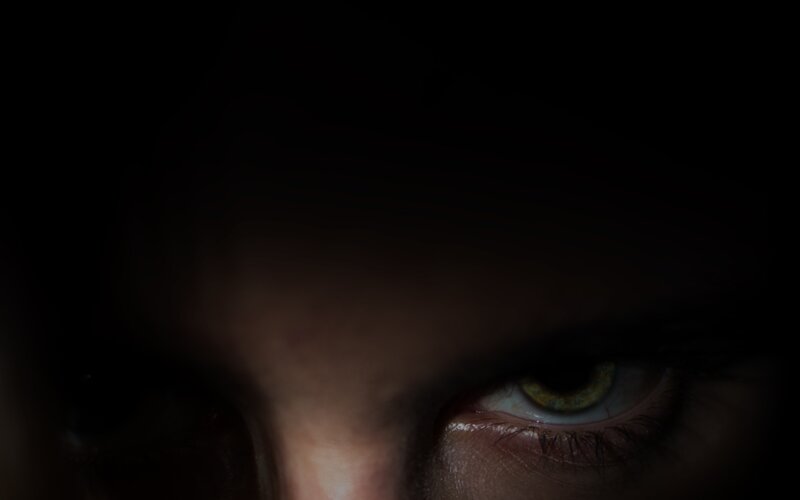
There’s nothing like a good thriller novel. Fingers pressed into the page’s edges, eyes scanning from one line to the next and the inability to put the book down, even when you’re on the move.
Ever wondered how to write a thriller that’s a best-seller? Read on to learn some tips from authors Lee Child, Harlan Coben and Ken Follett.
What is a thriller?
Thriller stories are packed with suspense, tension, excitement, and action. They’re known for captivating readers thanks to their cleverly crafted plots and compelling characters. A good thriller story will play on heightening the emotions of its audience, which is why many of us find them addictively engrossing.
There are many types of thriller sub-genres. Some include psychological thrillers, science-fiction thrillers, crime thrillers, political thrillers, and techno-thrillers. Let’s take a quick look at some of their key characteristics below.
Psychological thrillers
Psychological thrillers usually contain themes of crime, multiple realities, mental illness or substance abuse. Think of I Know Where She Is by S.B. Caves, Misery by Stephen King or Big Little Lies by Liane Moriarty. You may also spot the trope of an unreliable narrator in these stories.
Science-fiction thrillers
These often explore themes such as artificial intelligence and machine ruling, conspiracy theories, alternate realities, extra-terrestrials, and the apocalyptic future of mankind. Popular examples include Recursion by Blake Crouch, Hail Mary by Andy Weir and Neuromancer by William Gibson.
Crime thrillers
Crime and action thrillers will often explore themes like abductions, assassinations, heists and ransoms. Think of the Jack Reacher book series by Lee Child.
Political thrillers
Popular themes of political thriller stories are political corruption, organized crime, terrorism and warfare. While Justice Sleeps by Stacey Abrams and House of Cards by Michael Dobbs are some well-known examples.
Techno-thrillers
This is a hybrid genre that takes influence from science fiction, spy fiction, action and war stories. So, you may find other books mentioned above seeping into this subgenre. Some well-known examples of techno-thrillers are Lost in Time by A.G. Riddle and Digital Fortress by Dan Brown.

How to write a thriller
You may know what subgenre you want your story to fit into before you get writing, or that may come later. We’ve rounded up a few tips from best-selling author, Lee Child to keep in mind as you begin the writing process.
Read everything – not just thrillers
If there’s one thing Lee Child and Ken Follett agree on, it’s that reading is an essential hobby for any good writer. Whether it’s the script of a new sci-fi thriller film, topical articles from your favourite journalist or the plays and poetry of Shakespeare, exposing yourself to a breadth of stories and how they’re told is incredibly valuable.
As a reader, you build up a “huge database of what works and what doesn’t, what’s good and what’s bad,” says Lee Child in his BBC Maestro writing course on Writing Popular Fiction. Reflect on some of your favourite novels. What worked well? What didn’t land in the way you hoped? What left you feeling unsatisfied as a reader? Making a note of these will equip you with learnings to carry into your own writing.
Don’t underestimate the influence of reading different genres, styles, and forms of writing. You may absorb something new into that database that enriches your thriller writing in new ways.
Build compelling characters
Emotion is incredibly important in thriller writing. You need to create compelling characters your readers are going to care about. Otherwise, when it comes to those moments of drama and action, your readers won’t be invested enough for them to be engaged in your story. As Harlan Coben says about writing a thriller, in his BBC Maestro course, “it could stir your mind, but if I don’t also stir your heart [as a writer], it’s not going to work.”
Creating a bond between the reader and your characters comes down to bringing empathy into your writing. Ken Follett’s advice? “When you’re writing about emotion, don’t be cool, embarrass yourself,” he says. “This is about exposing yourself as a writer.”
Great thrillers feature protagonists that are flawed and complex, but likeable. When it comes to developing your characters, consider your protagonist’s background and experience.
What attributes do they have that make them interesting? What are their weaknesses? Having a three-dimensional protagonist is essential for a great thriller. Why not take a look at our free character bio template to help you in the character-crafting process?
Use real experiences to build a riveting plot
Your plot needs to be compelling too. “I realised that so much of it comes from my real life,” says writer Harlan Coben. Lee Child, too, recommends reflecting on moments in your own life as inspiration for your writing. In his online writing course, he highlights that, by accessing a past experience or memory where you felt an intense emotion – shock, fear, panic or upset, you can create incredibly gripping writing.
He uses the example of a situation where someone loses their child in a shopping mall. “Remember that split second of horror or panic,” he says. “If your book is about [how] your kid is kidnapped, or your sister is kidnapped – use that feeling. Remember that intense dread and horror that you felt for that one second and expand it.”
Perfect your pace
“People think that thrillers have to be full of action and pace. And they do. But not chock full, not one hundred percent full, not full to overflowing,” says Lee Child.
Pace is essential for any story – but particularly for thrillers. It’s a powerful tool to create tension and suspense, but it also helps propel the story forward. That said, creating pace within your writing requires some craft.
“Pace and tension have to be modulated. If you have a relentless high pace – it’s the same as having no pace at all,” says Lee Child. “It has to be up and down, [have] slow and quiet periods and intense action periods, in order for pace to be recognised by readers,” he says.
So, choose your moments carefully. If there’s a big scene coming up, or a moment that is significant for readers to pick up on, here’s where you capitalise on pace. You might want to build suspense – so draw out the scene ahead of you. Add details. What’s going on in the scene? What does your character see? You want the reader to feel like they’re being pulled in. Don’t rush the plot along, slow it down in these moments.
Build a picture of what’s happening in the scene, ask questions that don’t get answered immediately, use shorter sentences, use repetition, and use dialogue. These can all be great tools to play with in creating suspense. As historical fiction writer Ken Follett points out, “That’s the thing about detail, if you put it in the right place it adds to the suspense”.
Take a mundane event that occurs in your day-to-day and write it out in a few different ways. How can you make it exciting? How can you pack it with energy and remove its dullness? You may find that one works better than the others.
Ready to create a thriller that shakes the world? Take a look at Lee Child’s course Writing Popular Fiction. If you want to learn more about writing, you can explore our online writing courses.

Give the gift of knowledge
Surprise a special someone with a year's access to BBC Maestro or gift them a single course.





